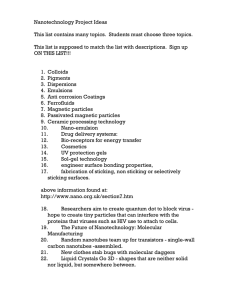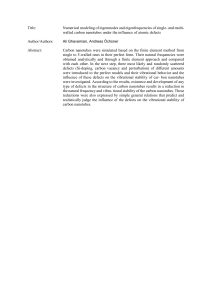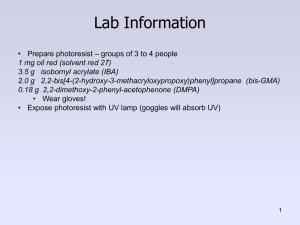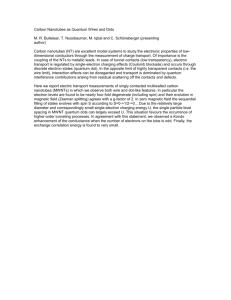Research Directions in Computing - CS406
advertisement
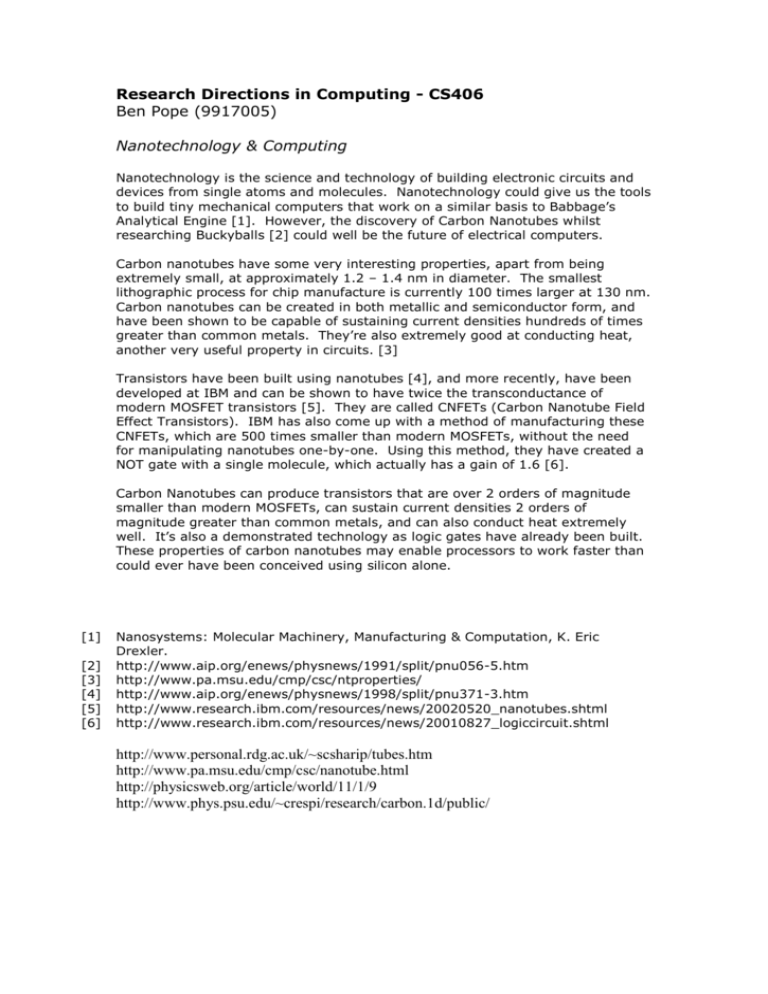
Research Directions in Computing - CS406 Ben Pope (9917005) Nanotechnology & Computing Nanotechnology is the science and technology of building electronic circuits and devices from single atoms and molecules. Nanotechnology could give us the tools to build tiny mechanical computers that work on a similar basis to Babbage’s Analytical Engine [1]. However, the discovery of Carbon Nanotubes whilst researching Buckyballs [2] could well be the future of electrical computers. Carbon nanotubes have some very interesting properties, apart from being extremely small, at approximately 1.2 – 1.4 nm in diameter. The smallest lithographic process for chip manufacture is currently 100 times larger at 130 nm. Carbon nanotubes can be created in both metallic and semiconductor form, and have been shown to be capable of sustaining current densities hundreds of times greater than common metals. They’re also extremely good at conducting heat, another very useful property in circuits. [3] Transistors have been built using nanotubes [4], and more recently, have been developed at IBM and can be shown to have twice the transconductance of modern MOSFET transistors [5]. They are called CNFETs (Carbon Nanotube Field Effect Transistors). IBM has also come up with a method of manufacturing these CNFETs, which are 500 times smaller than modern MOSFETs, without the need for manipulating nanotubes one-by-one. Using this method, they have created a NOT gate with a single molecule, which actually has a gain of 1.6 [6]. Carbon Nanotubes can produce transistors that are over 2 orders of magnitude smaller than modern MOSFETs, can sustain current densities 2 orders of magnitude greater than common metals, and can also conduct heat extremely well. It’s also a demonstrated technology as logic gates have already been built. These properties of carbon nanotubes may enable processors to work faster than could ever have been conceived using silicon alone. [1] [2] [3] [4] [5] [6] Nanosystems: Molecular Machinery, Manufacturing & Computation, K. Eric Drexler. http://www.aip.org/enews/physnews/1991/split/pnu056-5.htm http://www.pa.msu.edu/cmp/csc/ntproperties/ http://www.aip.org/enews/physnews/1998/split/pnu371-3.htm http://www.research.ibm.com/resources/news/20020520_nanotubes.shtml http://www.research.ibm.com/resources/news/20010827_logiccircuit.shtml http://www.personal.rdg.ac.uk/~scsharip/tubes.htm http://www.pa.msu.edu/cmp/csc/nanotube.html http://physicsweb.org/article/world/11/1/9 http://www.phys.psu.edu/~crespi/research/carbon.1d/public/


